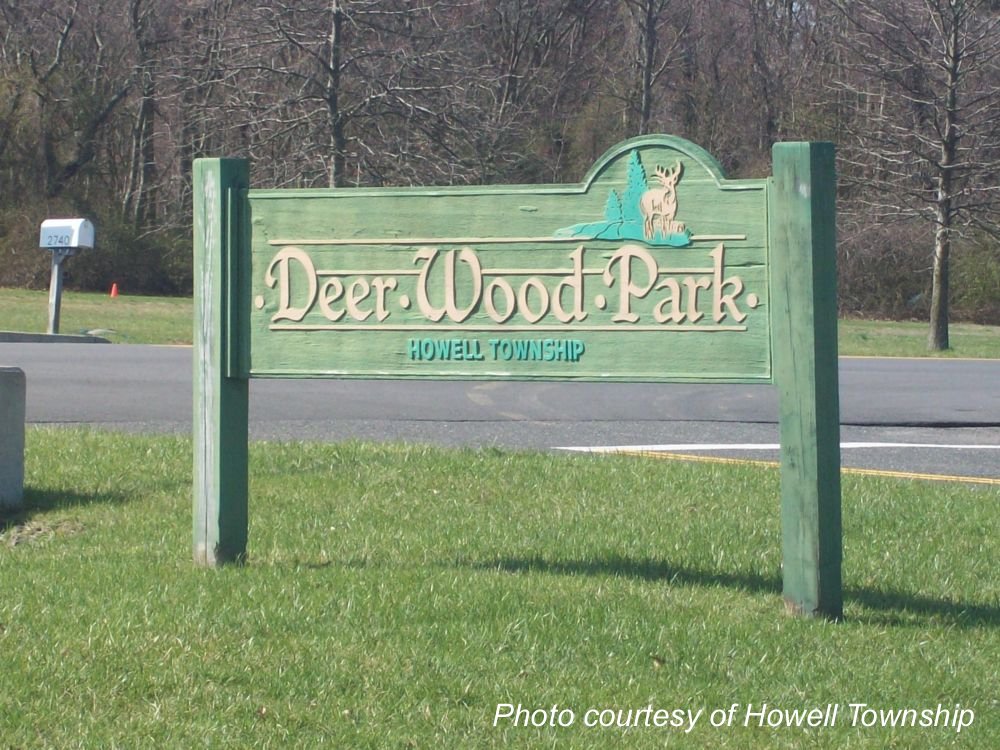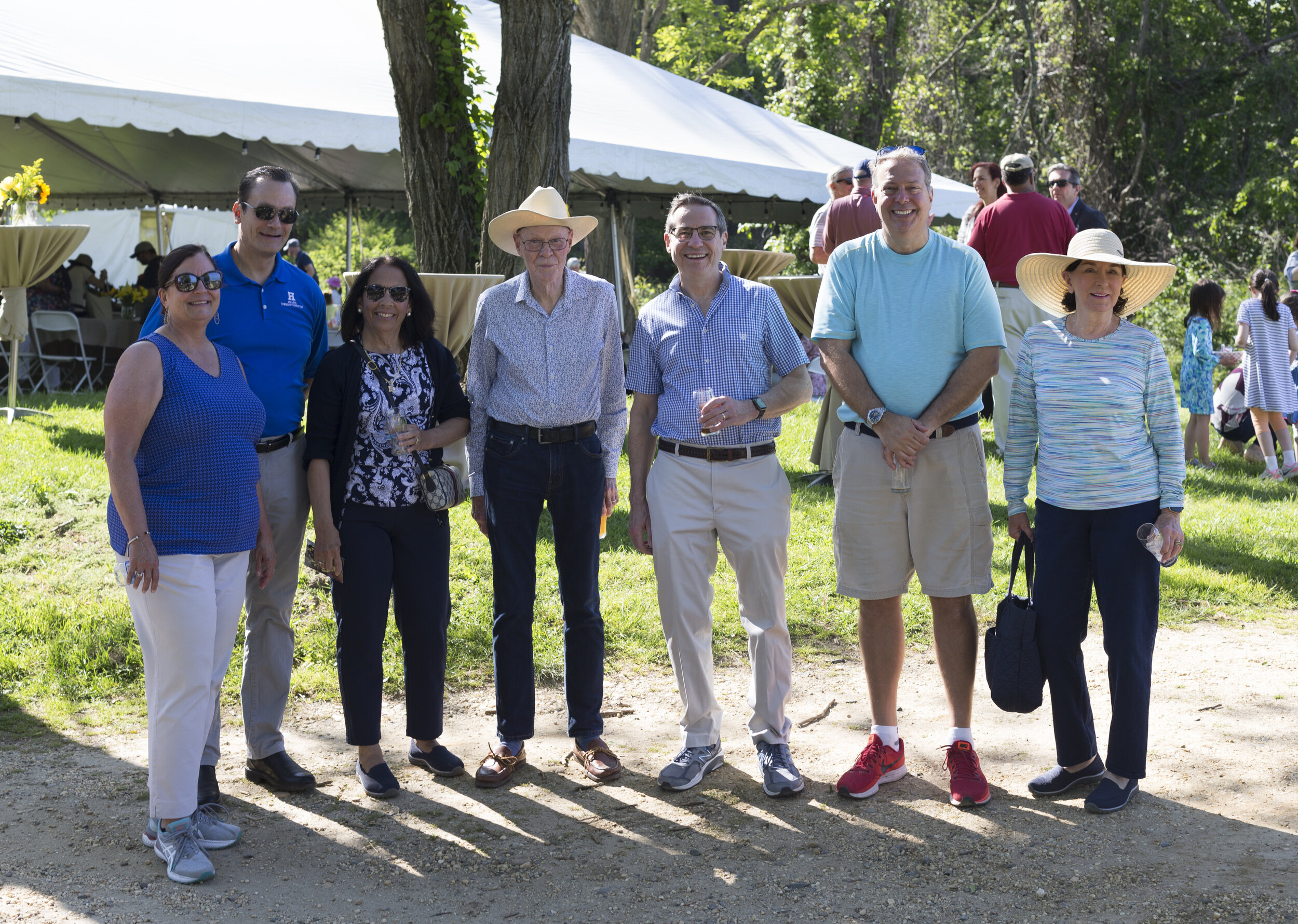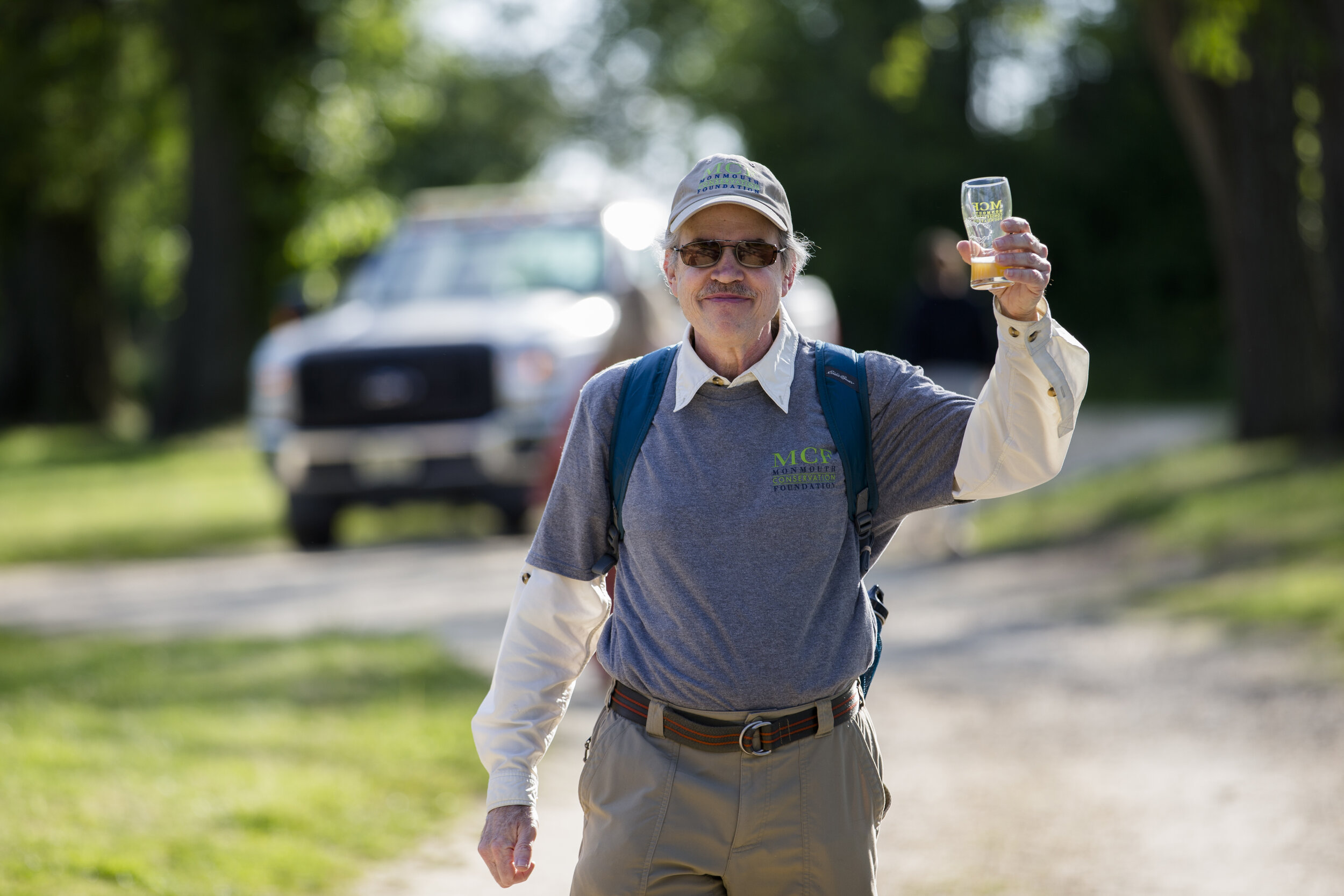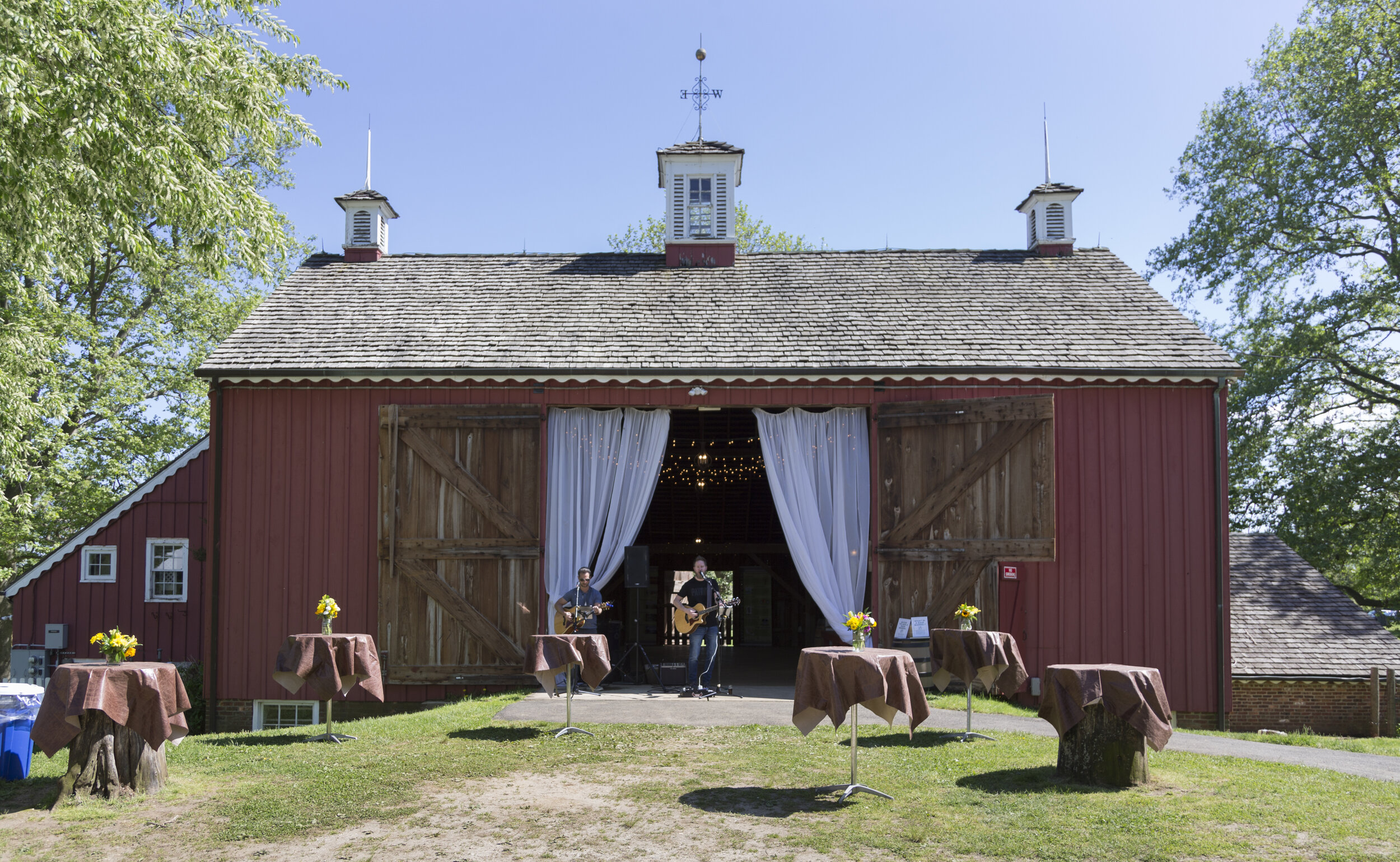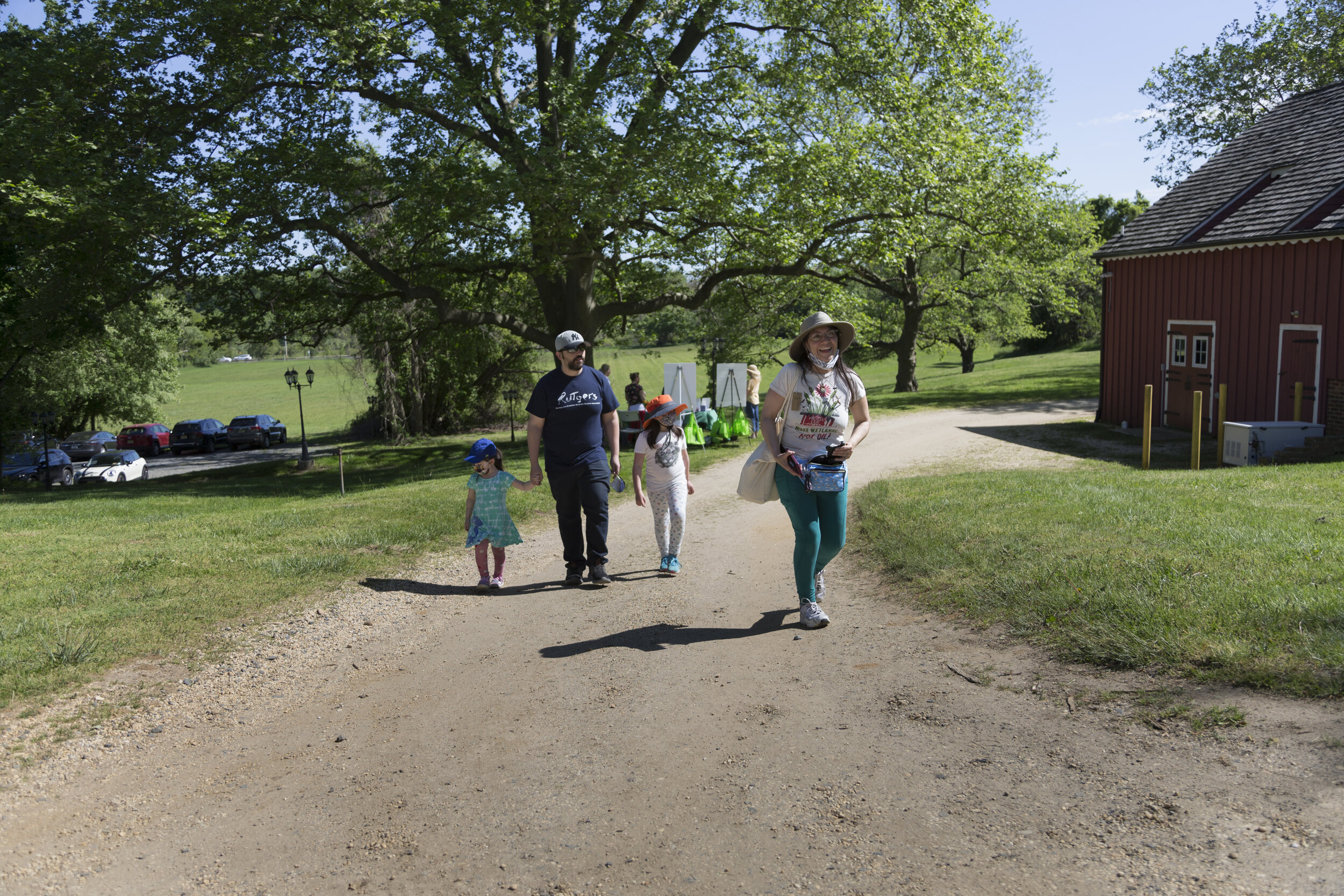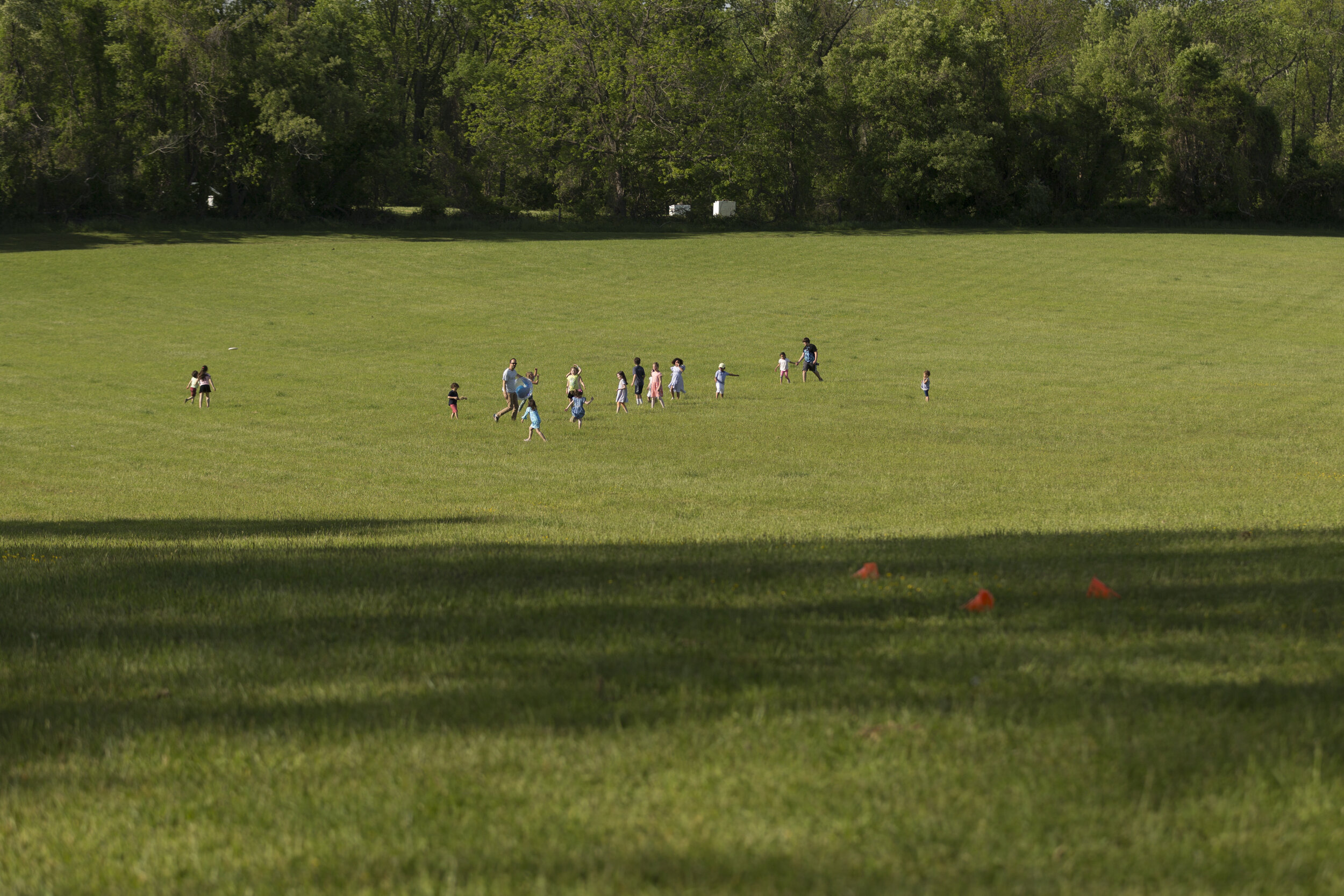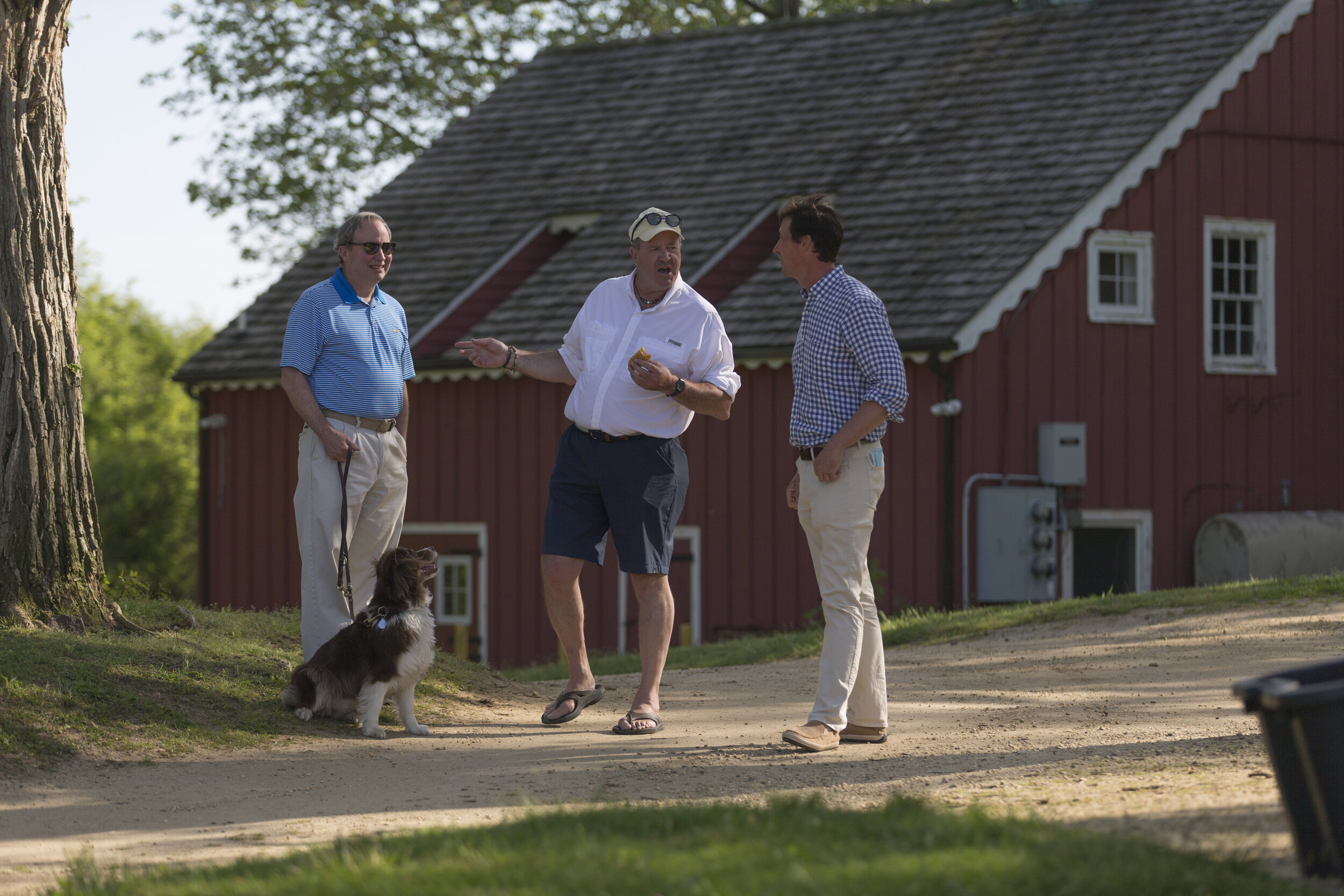A decade after Superstorm Sandy made landfall in New Jersey, it’s still frightening to think back on the devastation that resulted in coastal areas of the state, especially here in Monmouth County, yet striking to witness the resolve of residents who rallied support for one another and rebuilt, Jersey Strong. We are still rebuilding in many cases and adapting in myriad ways to put up our best possible defense against future storms and coastal hazard protection, yet perspectives on perceived risk from these threats have arguably lessened in the years that have passed since Sandy. Land preservation plays a critical role in the sustainability of our coastal home and sits centrally in the paradox of booming development amidst mounting environmental pressures.
Satellite image of Superstorm Sandy courtesy of NOAA
Sandy’s Shattering Impacts
Superstorm Sandy was an unprecedented event referred to often as the “perfect storm” or “storm of the century.” It originated as a tropical depression in the Caribbean and developed into a hurricane, impacting Jamaica, Cuba, and The Bahamas before traveling north to the Jersey Shore. What made it a “Superstorm” was its later involvement with cold, non-tropical weather and its development into an unusually large, catastrophic event.
Making landfall in New Jersey on Monday evening, October 29, 2012 during astronomical high tide (peak high tide during the full moon), Sandy caused record storm surge and flooding along the entire New Jersey Coast. Here in Monmouth County, visitors to Sandy Hook in Gateway National Recreation Area can still see the water line approximately 5 ½ feet high on the windows of the old Fort Hancock checkpoint booth alone the park’s Hartshorne Drive. This shattered the previous record tide at Sandy Hook, set in 1960 during Hurricane Donna, by more than three feet. Water brought onshore by Sandy inundated New York City and flooded every main subway line, shutting down the entire Metropolitan Transportation Authority (MTA) system. In Mantoloking in Ocean County, New Jersey, the ocean overtook the barrier island, creating an inlet and ravaging homes.
Storm surge and flooding are not the only records set by Sandy, which remarkably assaulted the mid-Atlantic coast moving due west at landfall. The storm was the second largest Atlantic tropical cyclone since 1988 and set the record for the lowest pressure of an Atlantic storm north of North Carolina. Its amazing size, strength, and pressure astounded meteorologists, and the storm caused record power outages and damage costs associated with flooding. According to the National Oceanic and Atmospheric Administration (NOAA), Sandy caused an estimated $70.2 billion total in damages, making it the fourth-costliest storm in the country behind Hurricanes Katrina in 2005 and Harvey and Maria in 2017.
Among the state’s 35 hardest hit towns, the majority were in Monmouth and Ocean. Rutgers’ School of Public Affairs and Administration published a report in 2013 on The Impact of Superstorm Sandy on New Jersey Towns and Households, which tallied the total cost of damages in New Jersey alone to be more than $37 billion. Monmouth and Ocean counties, respectively, were found to have suffered the most overall from Sandy, especially in terms of power outages, residential damage, residents in shelters, and gasoline shortages. The Monmouth County Park System (MCPS) has reported damages from Sandy to its parks totaling $8 million, with the county’s low-lying Bayshore region being one of the hardest hit areas.
Several factors contributed to Superstorm Sandy’s severity – the combination of weather systems, landfall in New Jersey coinciding with the astronomical high tide, and its direction and makeup as mentioned above, but also environmental conditions caused by climate change. Notably – rising sea levels exacerbated storm surge and flooding during Sandy. As the world’s glaciers and the Greenland and Antarctic ice sheets continue to melt, sea level will steadily rise and inundate our shorelines. Higher water levels decrease the buffer between the ocean and homes or buildings in coastal areas, which means we will experience more intense and more frequent flooding, especially from storms. Locally, we are all too familiar with increasing flooding events in areas like the boroughs of Union Beach, Highlands, and Rumson.
Compounding this, as residential and commercial development increase in our region, so does the prevalence of paved, impermeable surfaces which allow water to run right over and through, taking away any natural shield our environment would otherwise offer. The build-up of the Jersey Shore over the years, with boardwalks, jetties, sea walls, and bulkheads taking the place of natural features, has accelerated erosion – so much so, that New Jersey has been engaged in agreements with the Army Corp of Engineers for decades to regularly replenish beaches and dunes.
Also, as the planet continues to warm, coinciding ocean temperatures will increase, and warmer water temperatures provide fuel to strengthen tropical storms like Sandy. The notion of a 100-year storm is now sadly an oxymoron, with the probability of another extreme event becoming increasingly more likely.
Yet, for many, the desire to live on the coast remains great, and they may feel the rewards outweigh the risks. Can we position our region for sustainability in the future, facing collective threats of coastal hazards? Land preservation, including the work Monmouth Conservation Foundation (MCF) does, offers hope and a critical step in that direction.
Safeguarding the Future Through Land Preservation
In the wake of Sandy, coastal towns in New Jersey were obliterated. Some residents cut their losses and fled, but many rebuilt. In Monmouth municipalities like Highlands and Sea Bright, homeowners are still raising their houses in effort to sustain a future stronghold. Municipalities have leveraged federal and other relief funds to restore and adapt, in many cases employing engineered or natural solutions.
Houses Being Raised in Highlands © Erin Cadigan
At the State Level
Some New Jersey homeowners took advantage of the state’s Department of Environmental Protection (DEP) Blue Acres program, which helps communities identify and avoid risks of flooding through strategic climate resistance planning and acquisition of flood-prone property. The program’s goals are to preserve flood-prone land for the benefit of the surrounding community by providing a natural buffer from encroaching water, dramatically reducing the risk of future catastrophic flood damage, and helping families move out of harm’s way. The underlying land on these properties was permanently preserved as open space, becoming publicly accessible for recreation and/or conservation and providing a natural buffer for flood protection in the region.
Blue Acres has tremendous merit as a forward-thinking land preservation program mitigating a complicated battle with water, and The New York Times reported in 2021 that it has become a national model. Fawn McGee, Director of the Superstorm Sandy Blue Acres Program & Bureau Chief Green Acres State Land Acquisition for the DEP, shared at the time that more than 700 properties had been purchased with Blue Acres since Sandy. However, all were in low- to middle-income mainland communities, and none were on New Jersey’s barrier islands.
Mantoloking, for instance, which suffered 100% damage of homes in Sandy, today, has building lots that remain empty but nearly a dozen new million-dollar homes erected along its beachfront in the past decade. The barrier island community is being secured with a steel wall along the beach – a temporary solution in the face of coastal hazard pressures. There, like many other waterfront communities along the Jersey Shore, homes are regularly purchased, then torn down and rebuilt into even larger residences.
In Sea Bright following Sandy, one residential complex – the Anchorage Apartments, irreparably damaged in the storm, was purchased by the DEP Green Acres program and converted into a passive, waterfront park. The land was acquired using Green Acres funds and a grant from the National Park Service Lands and Water Conservation Fund. Recently, with financial assistance from MCF and Monmouth County, Phase One of development at the site – now Shrewsbury Riverfront Park – was completed, with walking paths, open green space, and installation of benches and fencing along the waterfront. Plans are moving ahead for Phase Two completion early next year, which will include amenities like a patio, pavilion, and landscaping. The park offers beautiful views, fishing access, and a restful stop to read, relax, or socialize – perhaps even for some, the opportunity to reflect on Superstorm Sandy and the homes and people that were previously in harm’s way there.
Above: Anchorage Apartments Damage immediately following Sandy courtesy of Khristi Jacobs
Aerial flyover of Shrewsbury Riverfront Park in progress in 2016 courtesy of Fred Yahn, Eagle Drone Solutions, LLC
At the Federal Level
The Department of Defense (DOD) established the Readiness and Environmental Protection Integration (REPI) Program in 2005 to combat encroachment – pressures that adversely affect the military’s use of its training and testing lands. Those pressures include extreme weather events like Superstorm Sandy and climate change, deemed a national security threat that has tangible impacts on military readiness.
The REPI program in part aims to address military bases’ vulnerabilities to recurrent flooding (as is the case in New Jersey), droughts, and wildfires.
MCF is currently working with the US Navy through the REPI program, which funds Congress-authorized cost-sharing partnerships between the Military Services, private conservation groups (like MCF), and state and local governments to acquire real property, typically in the form of conservation easements, from willing landowners, and where relevant, conduct restoration on the land. MCF and Monmouth County were awarded just over $2 million in funding through the REPI program to permanently protect land that buffers Naval Weapons Station Earle and help sustain critical, at-risk military mission capabilities.
MCF has identified several eligible parcels of land for protection and is actively negotiating with interested landowners to protect their land through an easement, a legal document that will restrict further development and uphold conservation values found on the property. Simultaneously, we are working to fundraise as the REPI award requires a 1:1 match from other sources of funding.
As REPI projects come to fruition, they form areas of protected or restored land and build resistance to climate change through off-[military] base natural infrastructure solutions – many of which are particularly relevant to storm and flood protection, including living shorelines, dune restoration, enhancing riparian buffers, and restoring wetlands.
Natural Climate Solutions
Click to visit REPI’s Interactive “Examples of Natural Infrustructure Solutions”
Image courtesy of REPI / US DoD
With building up and builder bigger regularly at play here, other solutions beyond land preservation through home buying or property acquisition are also employed. Existing preserved green spaces in New Jersey are being utilized to shore up the coast or low-lying areas.
For instance, here in Monmouth County, the $110 million Port Monmouth Hurricane and Storm Damage Risk Reduction Project, initiated in 2014, got underway shortly after Superstorm Sandy. The term “reduction” is sobering, yet the reality for the project’s goals of restoring and protecting the Bayshore region – specifically the Port Monmouth section of Middletown Township - from future storms and their impacts. The project is federally funded through the Sandy relief package and has taken place in Phases, currently in Contract 5, executed by the Army Corps of Engineers.
The first phase included beach replenishment and dune restoration at Bayshore Waterfront Park to help serve as a floodwall and installation of a rock groin to prevent sand erosion. The resulting natural barrier will protect homes and businesses in the area from future flooding. Overall, the project entails constructing a system of levees, a ½-mile floodwall, a tidal gate, road closure gates, road regrading, and pump stations as tide/water control features that collectively work to control and divert, or at least mitigate, incoming water.
Monmouth County has one of the best park systems in the state and arguably the nation, and its leadership and staff have been working to implement natural climate solutions following damage from Superstorm Sandy and ongoing erosion from other storms and rising sea levels. Projects have been successful at several MCPS parks, including at some which MCF played a role in establishing or expanding through collaborative land preservation.
At the Claypit Creek area of Hartshorne Woods Park along the Navesink River in Middletown, MCPS partnered with the American Littoral Society to restore significant damage from Sandy and install a living shoreline. The engineered bulkhead at the site was badly eroded, and accumulated sediment allowed invasive phragmites (common reed) to grow. Both were removed, and the low salt marsh area was planted with native vegetation, which has been shown to be more stable and resilient to storm damage – at a fraction of the cost of manmade solutions. The native plants also support the intended natural ecosystem, which provides a valuable nursery for shellfish, fish, wading birds, and other wildlife.
At Fisherman’s Cove Conservation Area in Manasquan, the New Jersey Department of Transportation (DOT) pumped sand from the Manasquan River Inlet to clear the channel for boat traffic following Sandy onto the park’s beach at no cost to the County. It was an economical solution with mutual benefits to the Inlet and Fisherman’s Cove, repairing erosion at both sites.
Natural climate solutions such as these offer environmental and economic benefits. They deliver a multitude of cost-effective advantages to society and biodiversity, providing critical ecosystem services like improved water and air quality, and flood protection.
How You Can Help
It’s no surprise New Jersey is the most densely populated state in the nation. The Garden State has a lot to offer, and those of us who call Monmouth County home are very fortunate when it comes to green space and access to water. Our home boasts beautiful beaches, ample parks, farmland, and diverse natural habitats – which provide wide-ranging benefits.
The health of our natural environment impacts the quality of the air we breathe, the water we drink, and the wellbeing of future generations. Our green spaces and waterways give high value to our real estate and foster our quality of life. Open space is critical to our region’s sustainability, offering natural climate solutions and storm protection, and this 10-year anniversary of Superstorm Sandy is a poignant reminder of the fragility of our home.
There is less and less open space available in the face of development and environmental pressures. MCF works with Monmouth County’s 53 municipalities to preserve land through various mechanisms for the benefit of our community and future generations. Funding is an utmost obstacle to compete with deep-pocketed developers, motivated property buyers, and myriad challenges to habitat survival to acquire and preserve land.
Immediately following Superstorm Sandy, property values plummeted in many areas of New Jersey, with the demand for waterfront properties in flood-prone and damaged communities severely diminished. Today, buyers’ fears have largely subsided, and MCF faces steep assessment values for properties being considered for acquisition. Support through charitable donations, grants, estate, and planned gifts enables MCF to stay in the fight. We have an extraordinary opportunity to raise matching funds to support farmland preservation and habitat protection through the REPI program. Donations of land or easements by Monmouth County landowners can also be a tremendous help, as is participation for relevant homeowners in programs like Blue or Green Acres.
Thinking back to the onset of the pandemic and the shutdown in 2020, we experienced an intense appreciation for the outdoors. It reminded us that every member of our community, regardless of race, religion, or socio-economic status, needs and deserves access to open space, optimally within walking or biking distance from their homes. Open space is of paramount importance for public health and wellbeing and for maintaining our quality of life.
MCF is currently prioritizing acquisition and park/open space development projects that are smaller in size and often located within the County’s more urban areas, but no less important to our residents. These projects have included the establishment of new parks in underserved communities such as Asbury Park and Neptune and the enhancement of a long-neglected park in Long Branch. In Red Bank, motivated by a generous gift from an anonymous donor, we are now partnering with the Borough to transform a former landfill into an eight-acre park in the Borough’s west side.
The existence of community green and blue spaces offers numerous benefits. Not only do they improve the health and wellbeing of residents, but they work to protect people and their homes from extreme weather events by providing natural climate solutions for resiliency through the protection of land.
Nature is a powerful force, for the bad and for the good sometimes. Through strategic applications of land preservation and natural infrastructure, we can, together, work to safeguard our future.
































